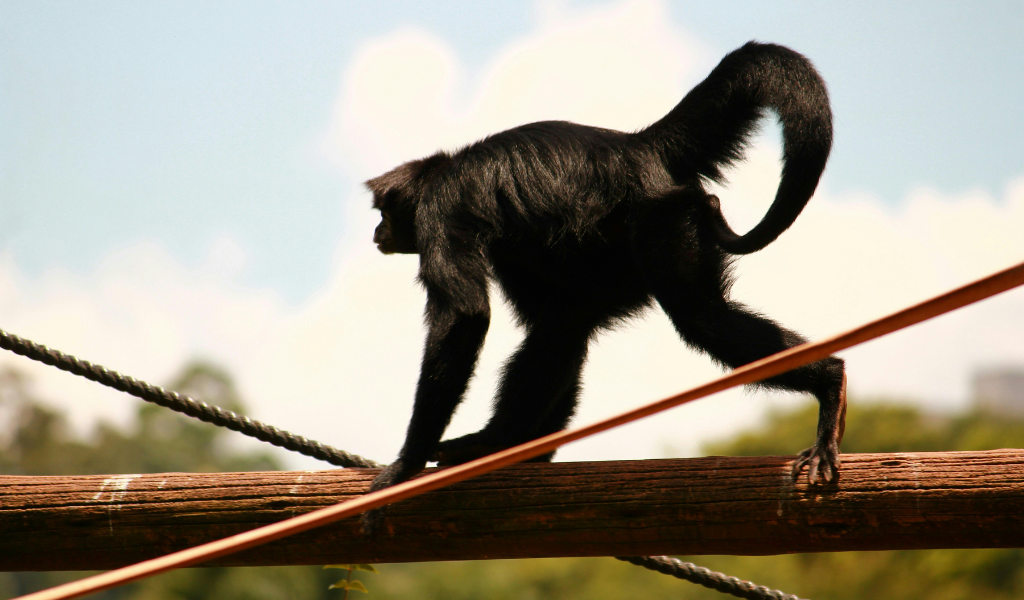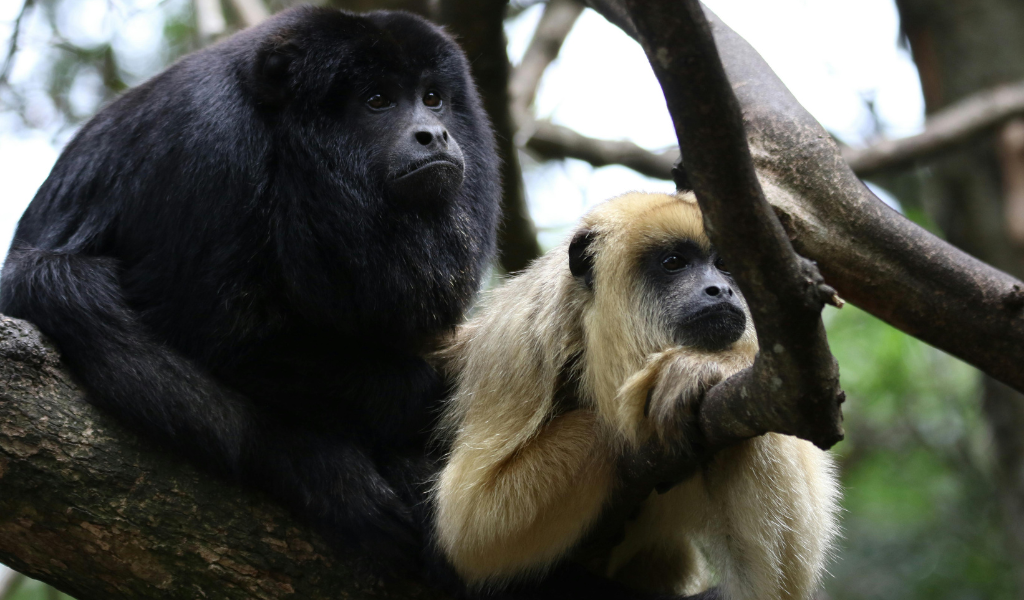You know that the Black-Handed Spider Monkey is not just another primate swinging through the trees but a crucial player in its ecosystem. These fascinating creatures are known for their remarkable intelligence and social structures, making them a vital part of their rainforest habitat. In this article, we’ll delve into the unique characteristics of the black-handed spider monkey, explore their manners and lifestyle, and discuss the pressing threats they face in the wild.
Located
They are fascinating primate species that thrive in the lush canopies of Central and South America. A small population is found in the southern regions of Mexico and Costa Richa.
Diet
These primates thrive on a rich assortment of fruits, the cornerstone of their nutrition. Their keen sense of smell lets them detect ripe fruits high in the canopy, where they swing gracefully from branch to branch. While fruits dominate their menu, Black-Handed Spider Monkeys occasionally indulge in nuts, insects, leaves, and seeds. This diverse diet reflects their opportunistic feeding behavior, allowing them to capitalize on seasonal variations and available resources.
Habitat
They thrive in the lush, high canopies of tropical rainforests, where the sunlight filters through a dense tapestry of leaves. These graceful primates seldom venture to the forest floor, preferring the safety and abundance of food found among the branches. Their arboreal lifestyle protects them from ground predators. Social animals at heart, such as Black-Handed Spider Monkeys, live in large groups that can number around 100 individuals; they often split into smaller subgroups during grazing to maximize their foraging efficiency.
They also face some natural predators, and the Bengal tiger is on the top.

Size
They are fascinating primate species, showcasing a remarkable size crucial to survival. Typically, these monkeys measure 15 to 20 inches long without their impressive tails, which can extend an astonishing 2 to 3 feet. This tail is not just for show; it’s a vital adaptation that aids in their acrobatic lifestyle, allowing them to navigate the dense canopies of their rainforest habitats with ease and agility.
Black-handed spider monkeys weigh 12 to 20 pounds, with males often outpacing females in size and heft. These tiny creatures weigh approximately 15 ounces at birth.
Appearance
The Black-Handed Spider Monkey is a striking example of nature’s artistry, boasting long limbs perfectly adapted for life among the treetops. The contrast in their fur adds to their allure; while it can be black, brown, or reddish, their darker arms and feet create a visual excellence that enhances their overall aesthetic. What truly captures attention, however, are their expressive eyes.
These large, soulful windows reveal a depth of emotion and intelligence that resonates with observers. The hook-like hands, uniquely evolved for grasping, further emphasize their specialized anatomy.
Reproduction
The black-handed spider monkey’s reproduction is a fascinating dance marked by unique timing and social dynamics. These primates do not stick to a regular breeding season, allowing for more flexibility in their reproductive strategies. After a gestation period of approximately 7.5 months, a single young is born, which is crucial for the species’ survival. Their lifespan in the wild is 20 years, but they reach approximately 45 years in human care.
Facts
The Black-Handed Spider Monkey, known scientifically as Atelidae, is a fascinating species showcasing its genus’s diversity. One of seven species of spider monkeys, it stands out due to its distinctive black hands and feet, which are perfectly adapted for its arboreal lifestyle. The other species are:
- Black-Handed Spider monkey
- White-Bellied Spider monkey
- Peruvian Spider monkey
- Brown Spider monkey
- White-Cheeked Spider monkey
- Black-Headed Spider monkey
- Red-Faced Spider monkey
All spider monkeys have close cousins within the Atelidae family. The Black-Handed Spider Monkey is often referred to as Geoffrey’s Spider Monkey.

Conclusion
In conclusion, they are remarkable species that play a vital role in their ecosystem. Their unique behaviors and social structures highlight their intelligence and the importance of preserving their natural habitats. Unfortunately, deforestation and habitat loss pose significant threats to their survival. Conservation efforts must be prioritized to ensure future generations can appreciate these fascinating creatures. Let us take action today to protect them and our planet’s biodiversity.
FAQs
How do Black-Handed Spider Monkeys communicate?
In their social groups, people communicate using a variety of vocalizations, body language, and facial expressions.
What is the social structure of Black-Handed Spider Monkeys?
They live in matriarchal groups, typically consisting of females and their offspring, while males may leave the group upon maturity.
How do Black-Handed Spider Monkeys use their tails?
Their prehensile tails are highly dexterous and serve as an extra limb for grasping branches, aiding their acrobatic lifestyle in the treetops.

